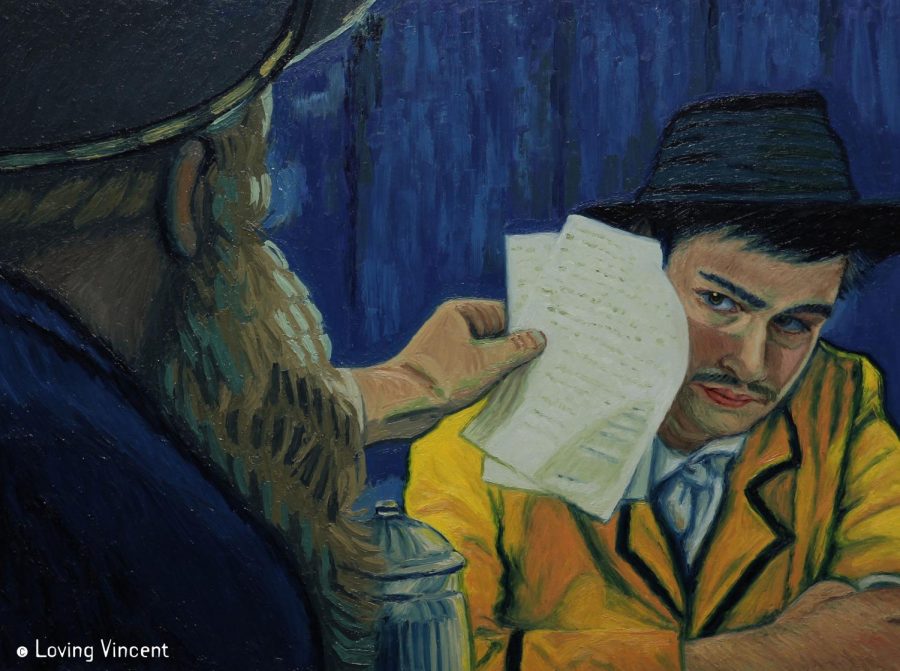Up until recently, painting and cartoons have been two mediums without much overlap. We view paintings largely in museums and watch cartoons on T.V. But now, with the release of “Loving Vincent,” the first fully painted feature film, audiences can view a captivating combination of the two.
The plot of “Loving Vincent” follows the story of Armand Roulin, the slacker son of a postmaster, as he investigates the tragic demise of Van Gogh. Roulin is sent by his father to deliver recently deceased Van Gogh’s last letter to his brother Theo. Traveling to Auvers-sur-Oise, Roulin meets many of Van Gogh’s acquaintances, some of whom served as inspiration for his artwork. But, in doing so, Roulin becomes wrapped up in the details of Van Gogh’s death in order to piece together his troubled life.
However, the uniqueness of “Loving Vincent” comes from its innovative style of animation. Instead of using computers to create the animation, directors Hugh Welchman and Dorota Kobiela hired 125 artists to hand-paint the frames, 65,000 oil paintings in total. Each shot was made into a painting, and to create the animation, the artists painted over each canvas hundreds of time to create changing scenery and facial expressions that would otherwise be achieved digitally. All of these paintings were created in the style of many of Van Gogh’s actual paintings, and the directors used black and white frames to convey flashbacks into Van Gogh’s life. As he painted very few self portraits, Van Gogh himself appeared only a handful of times in the movie, mainly in flashbacks.
But what was meant to be a tribute to the life and work of Van Gogh surprisingly didn’t include many details of his actual life. Instead, “Loving Vincent” seemed to focus on various speculations regarding his death, most of them fairly improbable. Most historians agree that Van Gogh died by suicide, but one far-fetched theory that the movie explores is that he was shot by someone else. By taking this route, the movie loses sight of its purpose, and blurs the line between creative liberty and blatant inaccuracy.
When viewed as a simple detective story, the plot of “Loving Vincent” is somewhat lacking. It never develops a storyline, and, with its many flashbacks, is difficult to follow at times.
Nonetheless, “Loving Vincent” has a certain charm to it that doesn’t go away. If you don’t see the movie for its plot, take delight in the whimsical charm that comes with watching Van Gogh’s paintings be, literally, brought to life.














